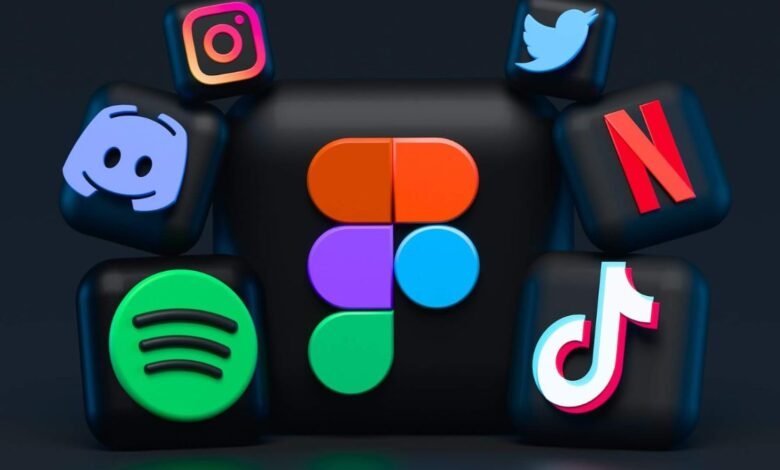The Evolution of Social Media: From MySpace to TikTok

The landscape of social media has undergone a remarkable transformation over the past two decades, evolving from a niche digital pastime to a dominant force in global communication and culture. This evolution is marked by significant milestones and shifts, each contributing to the sophisticated and diverse social media ecosystem we navigate today. To understand this evolution fully, it is essential to explore the development of key platforms, starting with MySpace and tracing the trajectory to the present-day titan, TikTok.
The Early Days: MySpace and the Dawn of Social Networking
The early 2000s marked the inception of social media as we recognize it today, with MySpace leading the charge. Launched in 2003 by Tom Anderson and Chris DeWolfe, MySpace quickly became a cultural phenomenon. Its design allowed users to create personalized profiles with unique backgrounds, music, and videos, offering a new form of self-expression. For many, MySpace was the first taste of what social networking could offer: a platform for connecting with friends, discovering new music, and expressing individuality.
At its peak, MySpace became a hub for artists, particularly musicians, who leveraged the platform to reach new audiences and build their brands. Bands and solo artists uploaded their tracks, created fan pages, and engaged with listeners directly, making MySpace a powerful tool in the music industry. Despite its initial success, MySpace’s dominance began to wane as newer platforms emerged. Its decline can be attributed to several factors, including an influx of spam, a cluttered interface, and the inability to keep pace with rapidly changing user expectations.
The Rise of Facebook: The New Social Media Paradigm
The decline of MySpace paved the way for the rise of Facebook, which launched in 2004 by Mark Zuckerberg and his Harvard University peers. Initially exclusive to college students, Facebook quickly expanded its reach to the general public. Unlike MySpace, Facebook’s clean and streamlined interface focused on real-world connections, with users required to use their real names and link to their educational or professional affiliations.
Facebook introduced features that became foundational for social media: the News Feed, the “Like” button, and the concept of sharing status updates, photos, and life events with friends. The platform’s emphasis on real identity and connections facilitated a more genuine form of interaction compared to its predecessors. Facebook’s ability to adapt and innovate, with features such as Pages, Groups, and the Marketplace, contributed significantly to its sustained dominance in the social media landscape.
However, as Facebook grew, so did concerns about privacy and data security. The Cambridge Analytica scandal in 2018 highlighted issues regarding user data misuse, raising questions about the platform’s handling of personal information. Despite these challenges, Facebook’s influence remained profound, shaping the way individuals and businesses engaged online.
Twitter and the Birth of Real-Time Communication
While Facebook was redefining social networking, Twitter emerged in 2006 as a platform focused on real-time communication. Founded by Jack Dorsey, Noah Glass, Biz Stone, and Evan Williams, Twitter’s core concept was simple: short, 140-character messages known as tweets. This brevity encouraged rapid, on-the-go updates and conversations.
Twitter quickly became a significant platform for breaking news, public discourse, and real-time engagement. Its hashtag feature, introduced in 2007, revolutionized the way users categorized and followed topics of interest, from global events to niche hobbies. The platform’s role in social movements, such as the Arab Spring and Black Lives Matter, underscored its power in amplifying voices and mobilizing communities.
Despite its impact, Twitter faced challenges in maintaining user engagement and addressing issues like harassment and misinformation. Efforts to combat these problems have been ongoing, but the platform’s influence on public conversation and its role in shaping digital culture are undeniable.
The Visual Revolution: Instagram and the Age of Imagery
The advent of Instagram in 2010 marked a significant shift towards visual-centric social media. Founded by Kevin Systrom and Mike Krieger, Instagram’s primary focus was on sharing photos and videos with a range of filters and editing tools that allowed users to enhance their visual content. This emphasis on aesthetics and visual storytelling resonated with users, leading to rapid growth and widespread adoption.
Instagram’s introduction of Stories in 2016, a feature allowing users to share ephemeral content that disappears after 24 hours, further transformed the platform. Stories encouraged spontaneous sharing and provided a new way for users to connect with their audience. Additionally, Instagram’s integration of shopping features and its algorithm-driven Explore page helped businesses and influencers monetize their presence, making the platform a powerful tool for branding and marketing.
Despite its success, Instagram faced scrutiny over its impact on mental health, particularly concerning issues like body image and comparison. The platform’s efforts to address these concerns, such as implementing features to hide likes and promote positive content, reflect ongoing challenges in balancing user experience with mental well-being.
The Emergence of TikTok: Redefining Content Creation
TikTok’s arrival on the social media scene in 2016, developed by Chinese company ByteDance, represented a new era in content creation and consumption. Initially launched as Douyin in China, the app was rebranded as TikTok for international markets in 2018. TikTok’s core feature is its focus on short-form video content, enabling users to create and share 15 to 60-second clips set to music, complete with a range of editing tools and effects.
TikTok’s algorithm-driven “For You Page” (FYP) became a defining feature, curating content based on user interests and interactions. This approach allowed even new creators to gain viral exposure, democratizing content creation and fostering a diverse range of trends and challenges. The platform’s emphasis on creativity and viral potential has led to the rise of numerous internet phenomena, from dance challenges to comedic skits.
The app’s rapid growth and influence have also sparked discussions about privacy, data security, and its impact on younger users. TikTok’s handling of user data and its relationship with its parent company, ByteDance, have been subjects of scrutiny, particularly in Western countries. Despite these concerns, TikTok’s success highlights a shift towards dynamic, interactive content and a new model of social media engagement.
The Future of Social Media: Trends and Predictions
As we look to the future, several trends and predictions are shaping the next phase of social media evolution. One significant trend is the increasing integration of augmented reality (AR) and virtual reality (VR) technologies. Platforms are exploring ways to incorporate immersive experiences, from virtual meetups to interactive shopping environments.
Another emerging trend is the growing emphasis on privacy and user control. With rising concerns about data security, platforms are investing in features that offer greater transparency and user control over personal information. Decentralized social networks, which aim to provide alternatives to traditional, centralized platforms, are also gaining attention as potential disruptors in the social media space.
Additionally, the role of artificial intelligence (AI) in content moderation and personalization is expected to expand. AI technologies are being developed to enhance user experience, combat misinformation, and create more personalized content feeds. However, the ethical implications of AI in social media, including issues of bias and transparency, will continue to be important considerations.
Conclusion: Reflecting on the Journey
The evolution of social media from MySpace to TikTok represents a journey marked by innovation, adaptation, and shifting user preferences. Each platform has contributed to shaping the digital landscape, influencing how we connect, communicate, and consume content. MySpace’s early focus on personalization, Facebook’s emphasis on real identity and connections, Twitter’s real-time communication, Instagram’s visual storytelling, and TikTok’s short-form video creativity all reflect the dynamic nature of social media.
As we move forward, the future of social media will likely be defined by advancements in technology, changes in user behavior, and ongoing debates about privacy and ethics. Understanding this evolution provides valuable insights into the impact of social media on our lives and the potential directions it may take in the years to come.



